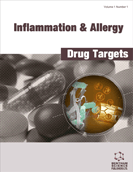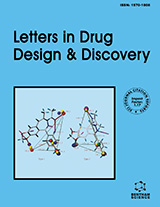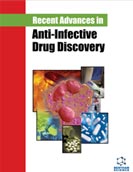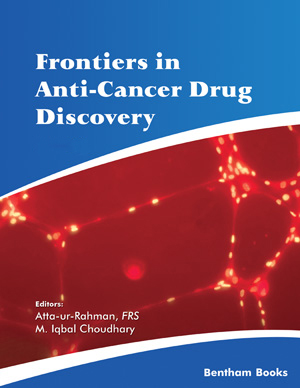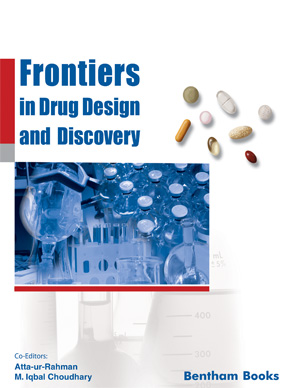Abstract
This review will emphasize the concept of anti-inflammation and propose that better understanding of the resolution phase of the inflammatory response organized by the host against inflammatory insults can lead to the identification of novel targets for drug development. Under the umbrella of anti-inflammation, we discuss here recent discoveries in the biology of annexin 1 and glucocorticoids. The fact that annexin 1 and another anti-inflammatory mediator, lipoxin A4, converge onto a specific membrane receptor (termed ALX) might help understanding the resolution phase of inflammation, and strengthen the use of this target for innovative drug development. In addition, glucocorticoids (GC), historically linked to annexin 1, are widely use in the clinical control of several pathologies with an inflammatory etiology, though their use is often burdened by several side effects. The development of new GC with more specific or improved mechanisms, e.g. the nitro-steroids, would go along this wave and, potentially, could be of large applicability. The two mediators/targets here illustrated are to be taken as examples of the clues that the study of anti-inflammation might give to the pharmaceutical industry for innovative drug discovery.
Keywords: Glucocorticoids, leukocyte, lipocortin 1, calcium flux, phagocytosis
Inflammation & Allergy - Drug Targets (Discontinued)
Title: Novel Aspects of Annexin 1 and Glucocorticoid Biology: Intersection with Nitric Oxide and the Lipoxin Receptor
Volume: 5 Issue: 2
Author(s): Mauro Perretti and Fulvio D'Acquisto
Affiliation:
Keywords: Glucocorticoids, leukocyte, lipocortin 1, calcium flux, phagocytosis
Abstract: This review will emphasize the concept of anti-inflammation and propose that better understanding of the resolution phase of the inflammatory response organized by the host against inflammatory insults can lead to the identification of novel targets for drug development. Under the umbrella of anti-inflammation, we discuss here recent discoveries in the biology of annexin 1 and glucocorticoids. The fact that annexin 1 and another anti-inflammatory mediator, lipoxin A4, converge onto a specific membrane receptor (termed ALX) might help understanding the resolution phase of inflammation, and strengthen the use of this target for innovative drug development. In addition, glucocorticoids (GC), historically linked to annexin 1, are widely use in the clinical control of several pathologies with an inflammatory etiology, though their use is often burdened by several side effects. The development of new GC with more specific or improved mechanisms, e.g. the nitro-steroids, would go along this wave and, potentially, could be of large applicability. The two mediators/targets here illustrated are to be taken as examples of the clues that the study of anti-inflammation might give to the pharmaceutical industry for innovative drug discovery.
Export Options
About this article
Cite this article as:
Perretti Mauro and D'Acquisto Fulvio, Novel Aspects of Annexin 1 and Glucocorticoid Biology: Intersection with Nitric Oxide and the Lipoxin Receptor, Inflammation & Allergy - Drug Targets (Discontinued) 2006; 5 (2) . https://dx.doi.org/10.2174/187152806776383170
| DOI https://dx.doi.org/10.2174/187152806776383170 |
Print ISSN 1871-5281 |
| Publisher Name Bentham Science Publisher |
Online ISSN 2212-4055 |
 3
3Related Articles
-
Mucosal Adjuvants
Current Pharmaceutical Design Chronic Eosinophilic Leukemia, Not Otherwise Specified (CEL, NOS)
Current Cancer Therapy Reviews MicroRNAs-based Therapy: A Novel and Promising Strategy for Cancer Treatment
MicroRNA Propofol and Systemic Inflammatory Response in Abdominal Aortic Surgery
Letters in Drug Design & Discovery Cell-Based Therapy to Promote Angiogenesis in the Brain Following Ischemic Damage
Current Vascular Pharmacology Bioenergetics Pathways and Therapeutic Resistance in Gliomas: Emerging Role of Mitochondria
Current Pharmaceutical Design Editorial [Hot Topic: New Approaches to Treating Cancer: Medicinal Chemistry and Therapeutic Potential (Guest Editor: David J. Weber)]
Current Topics in Medicinal Chemistry Meet Our Editorial Board Member
Current Medicinal Chemistry The Determination and Use of Optimized Protease Substrates In Drug Discovery and Development
Current Pharmaceutical Design Drug Resistance and Apoptosis in Cancer Treatment: Development of New Apoptosis-Inducing Agents Active in Drug Resistant Malignancies
Current Medicinal Chemistry - Anti-Cancer Agents Analysis of Proteins in Aerenchymatous Seminal Roots of Wheat Grown in Hypoxic Soils Under Waterlogged Conditions
Protein & Peptide Letters Concepts of Egr-1 Activation – A Hub for Signal Transduction Cascades
Current Signal Transduction Therapy Tobacco and Antiretrovirals Modulate Transporter, Metabolic Enzyme, and Antioxidant Enzyme Expression and Function in Polarized Macrophages
Current HIV Research Design and Synthesis of Novel Diaryl Heterocyclic Derivatives as Selective Cyclooxygenase-2
Letters in Drug Design & Discovery Application of Nanotechnology in the Treatment and Diagnosis of Gastrointestinal Cancers: Review of Recent Patents
Recent Patents on Anti-Cancer Drug Discovery DNA Copy Number Profiles Correlate with Outcome in Colorectal Cancer Patients Treated with Fluoropyrimidine/Antifolate-based Regimens
Current Drug Metabolism Immuno-Isolation in Oncology - A Mini-Review
Current Pharmaceutical Biotechnology Kynurenine Pathway in Schizophrenia: Pathophysiological and Therapeutic Aspects
Current Pharmaceutical Design Small Molecular Inhibitors of p-STAT3: Novel Agents for Treatment of Primary and Metastatic CNS Cancers
Recent Patents on CNS Drug Discovery (Discontinued) Pneumonia in the Elderly
Current Respiratory Medicine Reviews


